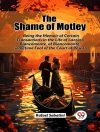In ‘Rappaccini’s Daughter, ‘ Nathaniel Hawthorne delves into the realm of science, morality, and the complexities of human emotion. Set in an Italian garden, the tale is steeped in rich symbolism and encapsulates Hawthorne’s signature Romantic style marked by lush descriptions and psychological depth. The story centers around Beatrice, a beautiful yet toxic woman cultivated by her father, the scientist Rappaccini, blurring the line between nature and humanity and raising profound questions about the ethical implications of scientific experimentation. This narrative reflects the broader literary context of the 19th century, particularly the tensions between Enlightenment rationality and Romanticism’s emphasis on emotional experience and moral ambiguity. Hawthorne, an influential American novelist and short story writer, was deeply inspired by the transcendent themes of nature versus nurture and the moral dilemmas faced by individuals. His Puritanical ancestry and fascination with the darker aspects of human nature vividly inform his characterizations, profoundly evident in this novella. Hawthorne’s own skepticism towards unchecked scientific progress and its consequences for human relationships resonates throughout the work, reflecting societal anxieties of his time. ‘Rappaccini’s Daughter’ is a must-read for anyone intrigued by the intersection of morality, science, and the human condition. Its haunting narrative and morally complex characters challenge readers to confront the implications of their own choices in a rapidly evolving world, making it not only an engaging story but also a poignant reflection on the ethical dimensions of knowledge.
Tentang Penulis
Nathaniel Hawthorne (1804–1864) stands as a key figure in the American literary canon, renowned for his gripping psychological narratives and use of allegory. Embedded in the traditions of Romanticism, Hawthorne’s works delve into themes of guilt, retribution, and the darker sides of human nature. With a penchant for exploring the moral complexities and the Puritan legacy of New England, his prose evokes a hauntingly dark atmosphere that has captivated readers and scholars alike. Notably, ‘Rappaccini’s Daughter’ is a prime example of his literary style, weaving a tale of scientific experimentation and forbidden love with rich allegorical significance and an air of gothic mystery. As one of Hawthorne’s famed short stories, it has been studied in the context of its environmental, medical and feminist implications, and stands as a testament to his ability to critique societal norms through narrative. Hawthorne’s work overall, from ‘The Scarlet Letter’ to ‘The House of the Seven Gables’, continues to garner analysis and praise for its intricate symbolism and narrative depth, establishing Hawthorne as a cornerstone of nineteenth-century American literature. His influence extends to the realms of psychology, philosophy, and theology, attesting to the enduring relevance of his literary contributions.












